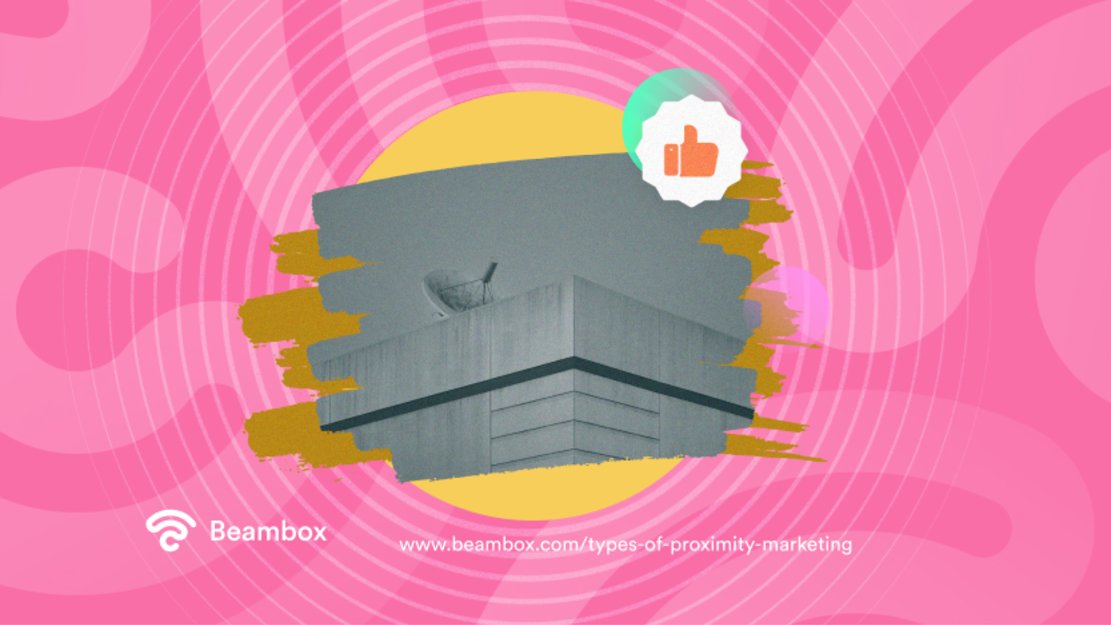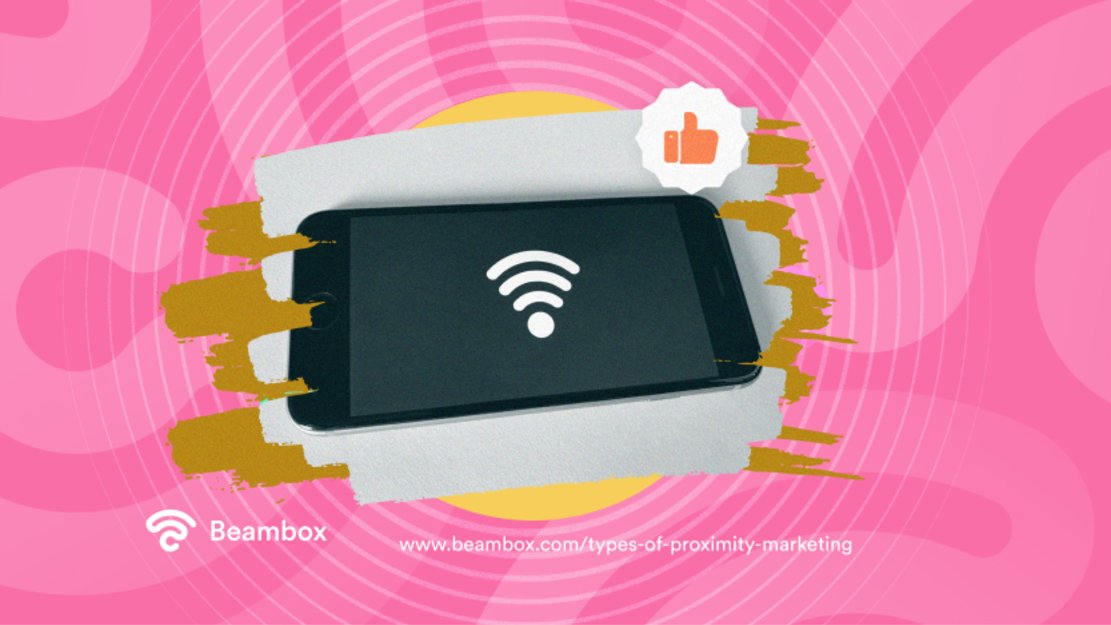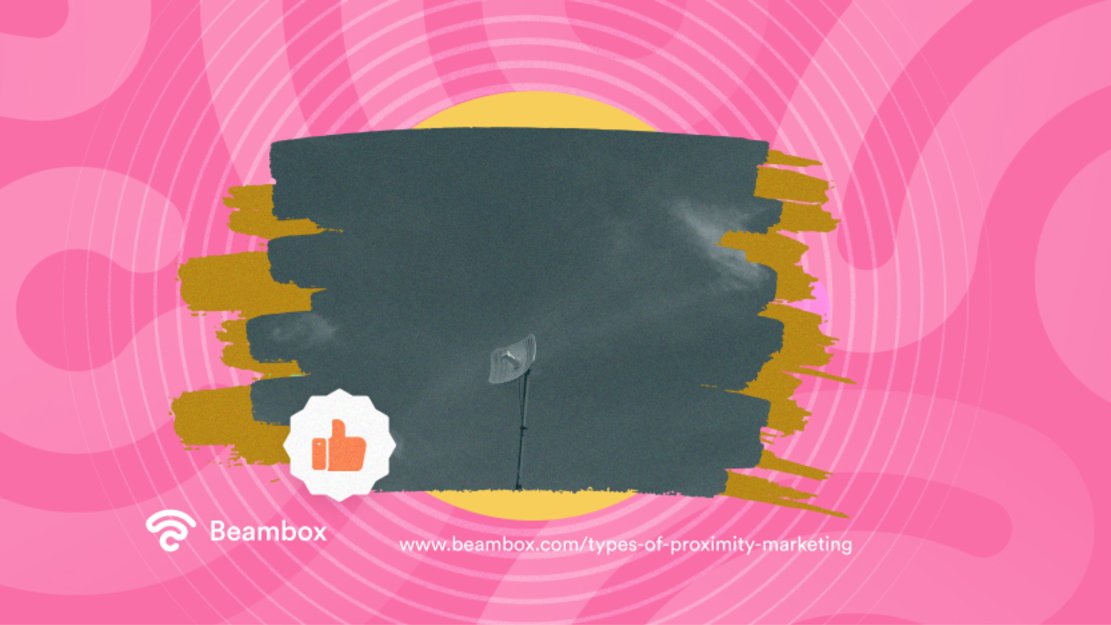If you want location-based marketing, nothing beats proximity marketing. This nifty location technology is a fantastic way to target customers at the right time and place. It is a super simple concept, just pinging marketing messages to mobile devices within a certain radius. This timely nudge dramatically boosts engagement; Forbes reports that 57% of customers are more likely to interact with proximity marketing. In this guide, though, we’ll be more specific in introducing you to location-based marketing. Instead of only discussing benefits and definitions, we’ll look at the different types of proximity marketing.
This is vital for choosing the right time for location-based marketing. With this extra information, you’ll be ready to make a decision.

What Is Proximity Marketing?
The proximity marketing strategy uses WiFi or Bluetooth signals to ping marketing to individual mobile devices. When a customer passes by proximity marketing beacons, it triggers field communication. It’s like customers triggering an alarm system or a tripwire.
This marketing technique is fantastic as it plays into the success of SMS marketing open rates. A quick notification on your mobile device will have a better opening rate than email marketing. The added element of location technologies incorporates the time aspect. It plays into the success of impulse-driven purchases.
For example, picture a customer entering a mall. As they enter, they trigger a beacon, which a shop called Ellie’s Shoes has organized to increase engagement. The beacon triggers a message to the customer via Bluetooth, sharing a 60% off deal with a 24-hour expiration period. The customer thinks, “Why not stop by,” as it’s only a 5-minute walk away, and makes a purchase.
You’re ensuring that your customers get the marketing message but that they also get the message at the right time. It is a way of catching your customer at the perfect time. This marketing strategy provides a small window of opportunity to trigger desired engagement better.
Proximity marketing technologies are easy to purchase. You can buy software like NearBee, which automates the process through beacon technology. Pricing ranges from a subscription-based model to a one-off payment.

4 Types of Proximity Marketing
There are four main types of proximity marketing. While all the types work off the same concept (triggered by location), potential customers receive them through different methods. For example, some may receive the marketing through SMS, while others may receive it through Bluetooth.
It is helpful to know the different ways this strategy can work. Getting your head around initially is quite a complex strategy, with some advanced technology behind it. Opportunistic and technologically advanced, here’s what you need to know about how this marketing works.
1. Bluetooth Proximity Marketing
Bluetooth marketing is the main way that business owners use location-based marketing. It relies on a Bluetooth beacon, which sends signals to nearby personal devices. Bluetooth is the way to go if you want a reliable and savvy marketing system. As long as customers have their Bluetooth enabled, they’ll receive your push notification.
It’s also an excellent idea for businesses that need the support of a wider WiFi network, like mall WiFi. Bluetooth marketing is the most popular type of beacon and can easily be set up in any strategic location.
2. SMS Proximity Marketing
SMS proximity marketing is a more advanced form of mobile proximity marketing. It relies on a pre-existing relationship with the customer, so you already have their number. You may have a contacts database if you already have data collection strategies like a captive portal.
You then use the Bluetooth beacon we explained above to receive notifications when regular customers are nearby. You can then enter that database of phone number contacts and send them a timely SMS with a deal.
3. Internet Proximity Marketing
Proximity marketing devices often target potential customers through mobile devices enabled for or connected to the business’ Internet. If devices are within reach of a transmitter, they’ll receive the marketing messages. It can also use WiFi Direct to facilitate push notifications when customers connect to a designated WiFi network.
The Internet is a reliable way to target customers. And if you’re in a retail setting or food court, this is the type of marketing you’ll likely see. It works well in settings with one wide-reaching internet network, like a mall. Customers connect to the mall WiFi and receive push notifications to prompt them to visit individual stores.
4. NFC Proximity Marketing
Near-field communication (NFC) marketing involves mobile devices that read radio-frequency identification (RFID) chips. It’s more useful for businesses with customers over their threshold who want to draw them to individual products instead.
This super savvy marketing technique uses the RFID tags on product barcodes to ping customers relevant notifications. For instance, giving you a discount on the item you’ve just stopped to browse.

How To Move Forward With Proximity Marketing
Of course, proximity marketing isn’t just a standalone marketing strategy. It is fantastic for driving engagement and getting customers over your threshold. But at that point, you need to draw on complementary strategies to gain the full benefit.
For instance, when customers enter, you offer them free WiFi. This is especially true if you provide refreshments, relaxation, or lounge areas. The proximity marketing technologies might prompt a visit, but you can then use WiFi marketing to capitalize on their visit. The best way to do this is by offering a guest WiFi with a captive portal.
Captive portals stop immediate access to your WiFi, requesting further details via a form if they wish to proceed. This is great for your business, as you can request email addresses and phone numbers. This funnels directly into a database system, leaving you with future marketing contacts for email and SMS campaigns.
Pairing a captive portal WiFi marketing system with location-based marketing is fantastic. The two complement each other exceptionally well. One catches your ideal customer outside of your business, while the other targets your customer when they are inside.
You can even find some captive portal software with a mobile application so your database is easily accessible.
If you want to proceed with location-based marketing, we suggest pairing it with a complementary strategy like captive portals. Teamwork makes the dream work, after all. A couple of strategies are always better than one.

Beambox: Pairing Captive Portal and Proximity Marketing
Here at Beambox, we can handle that coupling for you. Pairing captive portals with location-based marketing is a total breeze. All you need is an all-in-one WiFi marketing system to “capture” your customers as they cross your threshold. And we have fantastic software that does precisely that.
Our software helps you create and personalize a captive portal that works for you and your business. Once proximity marketing has brought customers into your business, you can create an ultimate system to target them.
This is perfect for increasing customer loyalty and engagement retention. The last thing you want is one-off hits; use captive portals to create longevity for your initial engagement.
At Beambox, we help businesses of all shapes and sizes to tackle their marketing. Start your Beambox free trial today. Now you know your types of proximity marketing, it’s time to learn some complementary marketing strategies.
Get Started With Free WiFi Marketing
Beambox helps businesses like yours grow with data capture, marketing automation and reputation management.
Sign up for 30 days free